Cats are enigmatic creatures, often leaving their human companions puzzled by their behaviors and expressions. Among the many mysteries of the feline world, a cat’s tail is one of the most expressive parts of its body. Just like a painter’s brush captures emotion on canvas, a cat’s tail paints a vivid picture of its feelings, intentions, and even health. For cat enthusiasts, understanding these tail signals can deepen the bond with their furry friends and ensure their well-being. Let’s delve into the intriguing world of feline tails and discover what they might be telling you.
The Vertical Tail
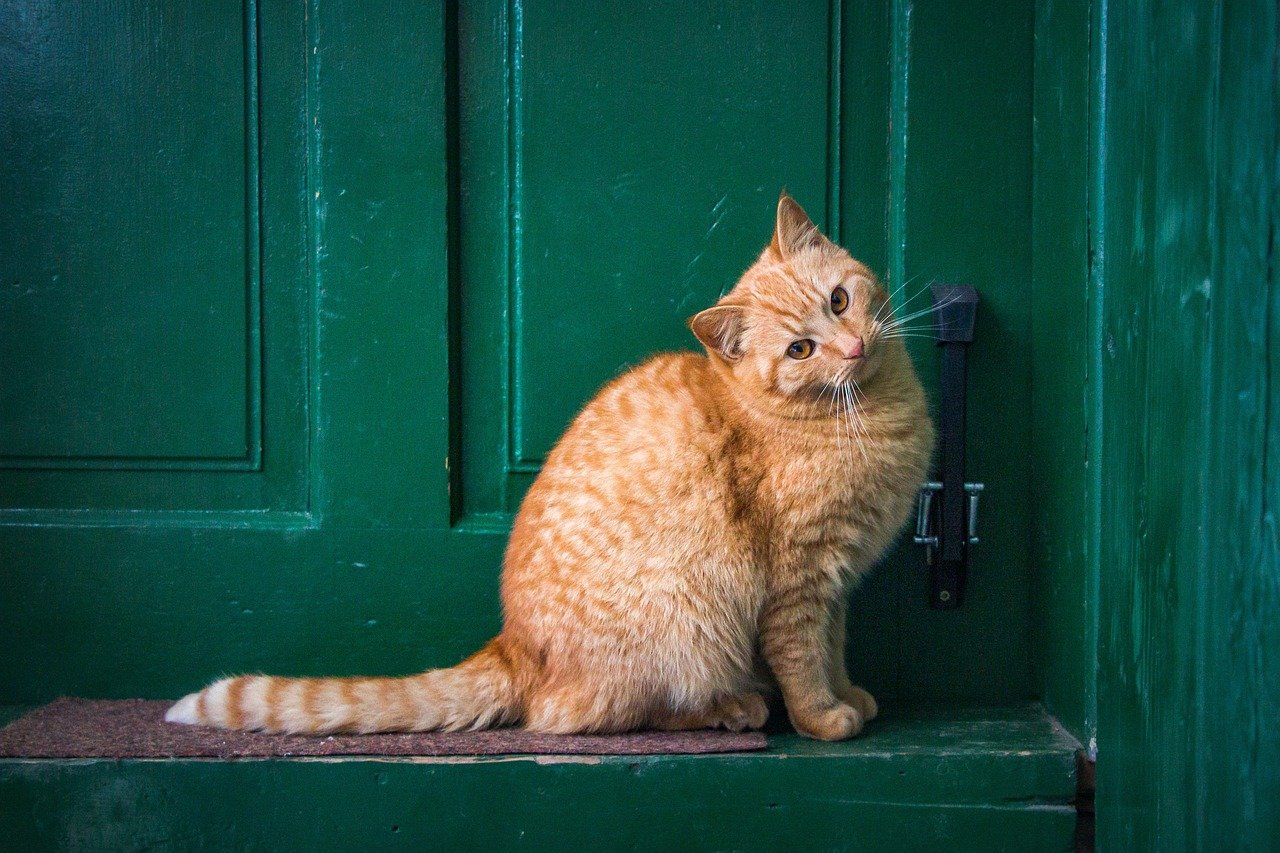
When your cat approaches you with its tail held high, it’s essentially waving a friendly hello. This posture is a sign of confidence and contentment. Imagine yourself walking into a room with your head held high and a smile on your face; that’s how your cat feels. It signifies that your cat is feeling secure in its environment and is happy to see you. Cats might also lift their tails when they’re curious or excited about exploring new territories. This is a good time for petting and play, as your feline friend is in a social mood. A high tail is a hallmark of a happy cat, so cherish these moments of connection.
The Question Mark Tail
Have you ever noticed your cat’s tail resembling a question mark? This curious shape suggests that your cat is feeling playful and inquisitive. Like a child ready to explore a new playground, your cat is in the mood for adventure. The question mark tail is an invitation to engage in playtime or introduce new toys. It’s a great opportunity to bond with your cat through interactive games. This tail position can also indicate that your cat is pondering something in its environment, weighing its options before deciding what to do next. Embrace this playful spirit and enjoy the fun moments it brings.
The Puffed-Up Tail
A puffed-up tail is your cat’s way of saying, “Back off!” This reaction is usually triggered by fear or aggression. Picture yourself suddenly startled, and your hair standing on end—that’s the feline equivalent. When a cat puffs up its tail, it’s trying to appear larger and more intimidating to whatever it perceives as a threat. It’s a defensive mechanism to ward off potential dangers. If you observe this behavior, it’s crucial to give your cat space and time to calm down. Avoid any sudden movements, and ensure that the environment is safe and free from stressors that might have caused this reaction.
The Low Tail
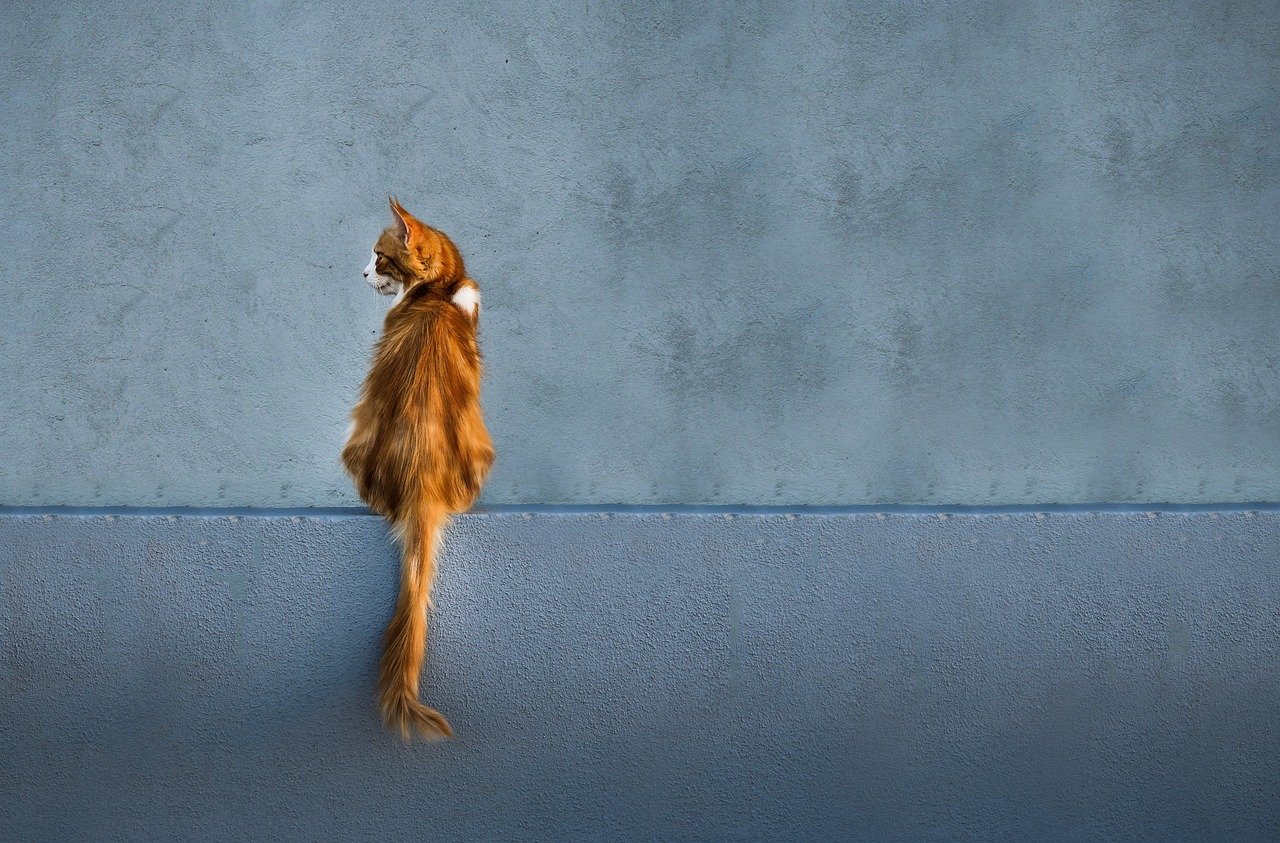
A low tail can be a sign of insecurity or submission. Much like how we might slouch our shoulders when feeling unsure or timid, a cat with a low-hanging tail may be experiencing similar emotions. It’s essential to assess the environment to determine what might be causing this behavior. Is there a new pet in the house? Are there loud noises or unfamiliar visitors? Identifying the cause can help you address your cat’s concerns and provide reassurance. Offering treats, gentle petting, and creating a safe space can help elevate your cat’s confidence and bring its tail back to a more neutral position.
The Flicking Tail
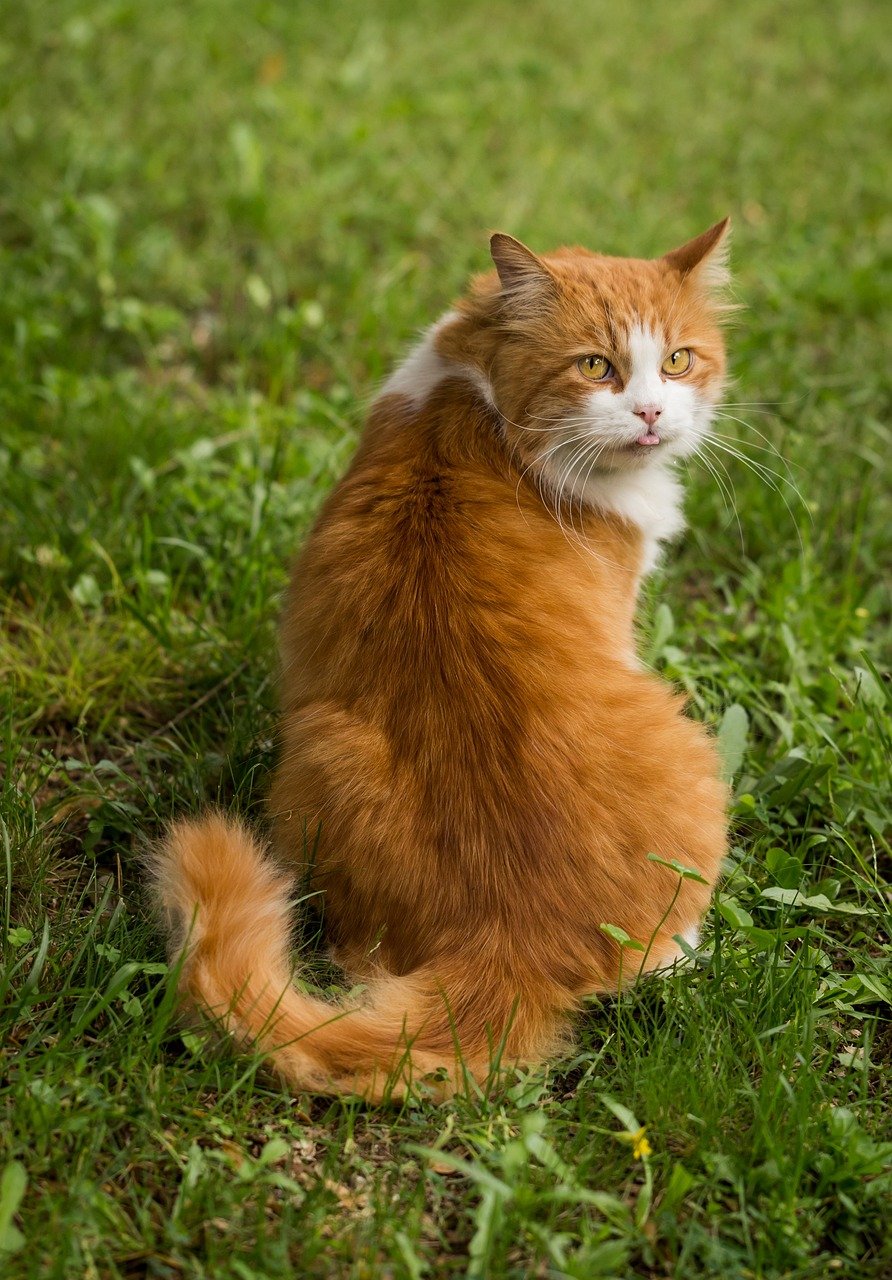
A flicking tail is a clear indicator that your cat is agitated or annoyed. Imagine tapping your foot impatiently; your cat’s tail flick serves the same purpose. This behavior can occur when a cat is overstimulated or frustrated. It’s a warning sign that your feline friend needs some space and time to de-stress. It’s important to respect this signal and avoid further interaction until the cat has calmed down. Recognizing this behavior can prevent potential aggressive reactions and maintain a harmonious environment. Always be mindful of your cat’s boundaries and ensure that it has a peaceful retreat.
The Wrapped Tail
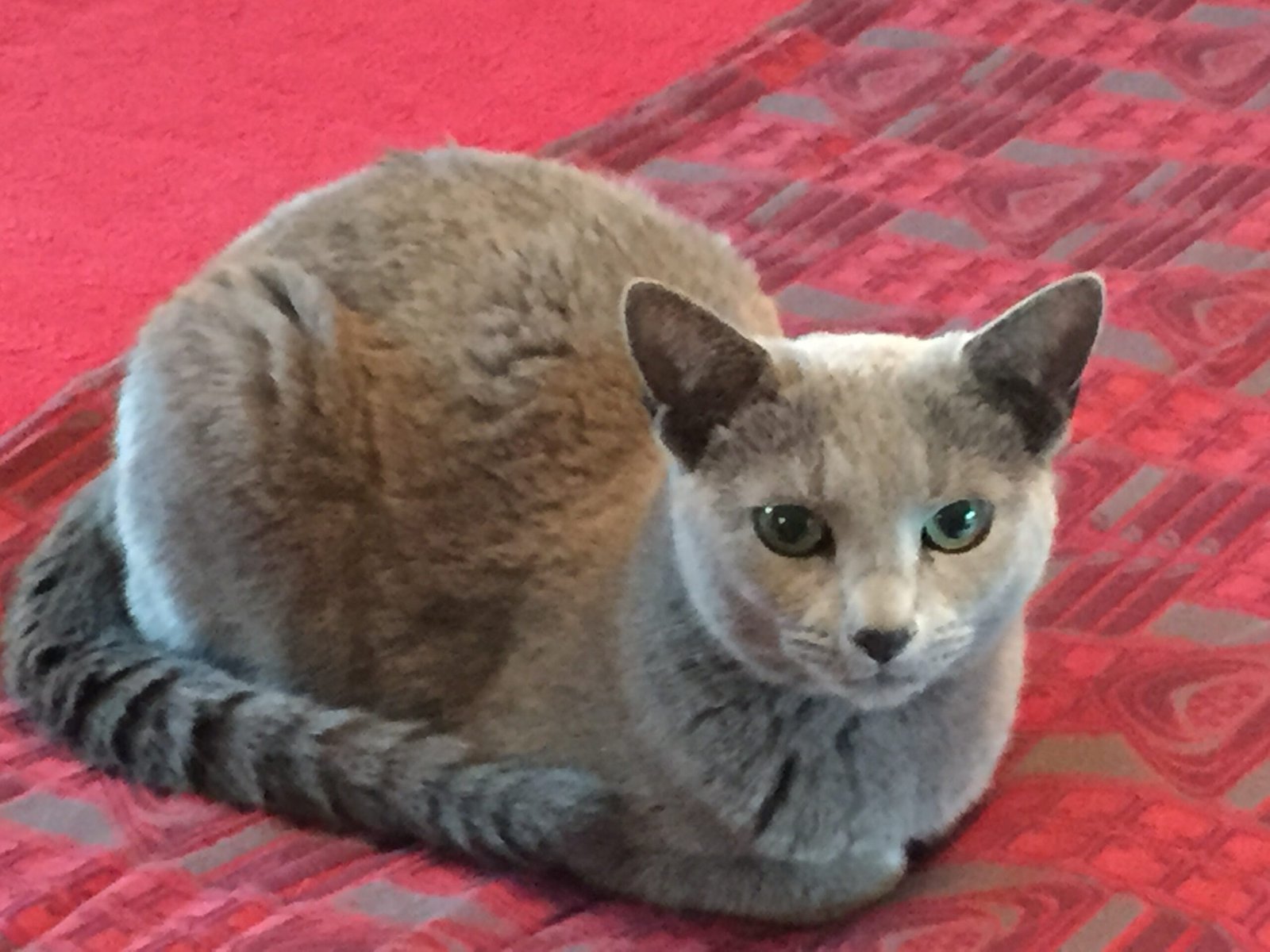
When a cat wraps its tail around its body, it’s a sign of self-comfort and warmth. Think of it as wrapping yourself in a cozy blanket on a chilly day. This behavior often occurs when a cat is resting or feeling relaxed. It signifies that your cat is content and enjoying a moment of serenity. However, if the tail is tightly wrapped and accompanied by a hunched posture, it may indicate discomfort or illness. Observing your cat’s overall body language can provide additional clues about its well-being. A relaxed and loosely wrapped tail is a positive sign of a happy and healthy cat.
The Swishing Tail
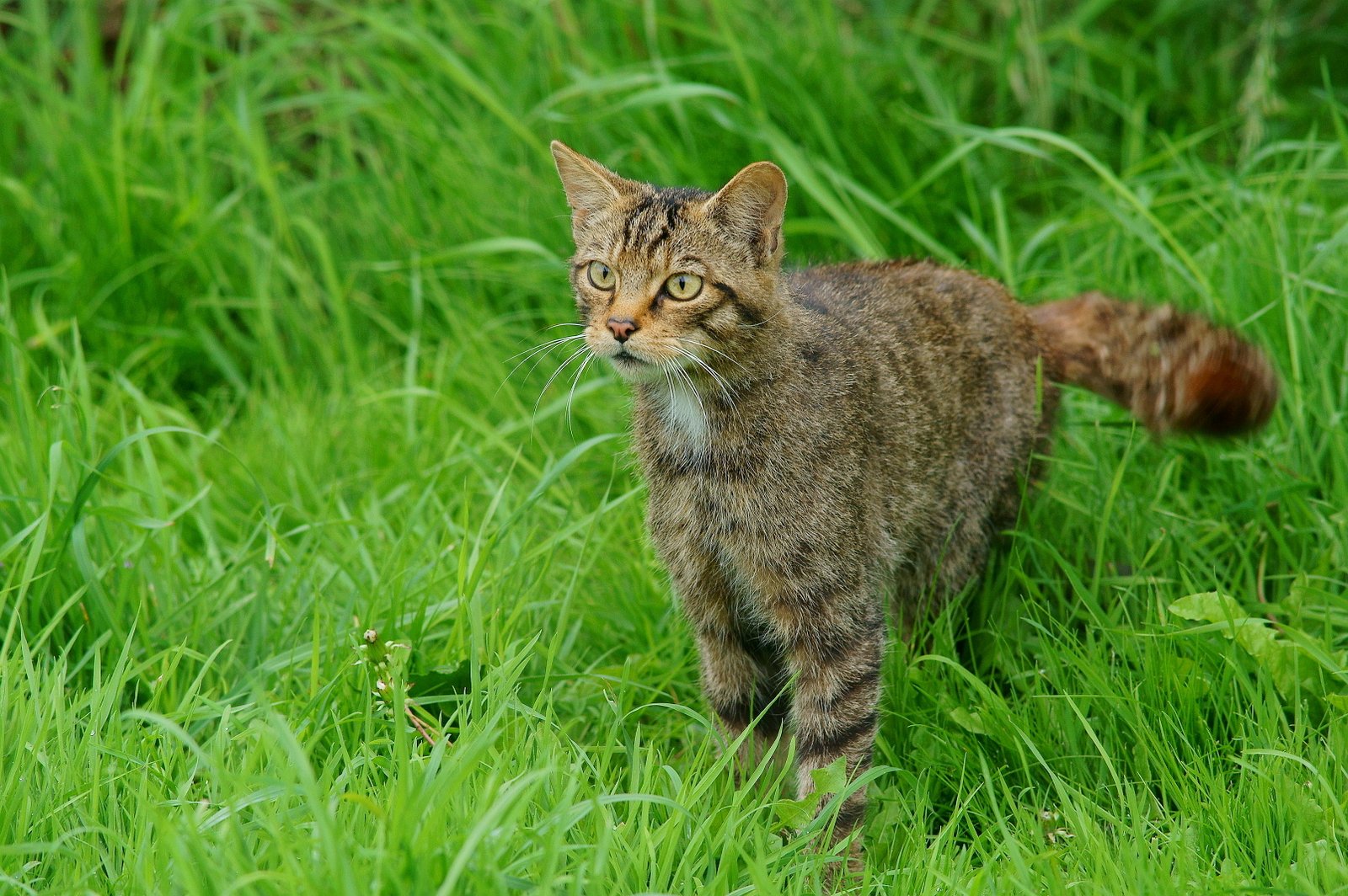
A swishing tail can be a bit of a mixed signal, as it might indicate excitement or irritation. Picture someone waving their arms enthusiastically; your cat’s swishing tail conveys similar emotions. In the context of play, a swishing tail can indicate that your cat is fully engaged and enjoying the activity. However, if the swishing becomes more rapid and forceful, it may suggest that your cat is becoming overstimulated or annoyed. It’s essential to read the situation and adjust your interactions accordingly. Understanding the nuances of a swishing tail can enhance your communication with your feline companion.
The Lashing Tail
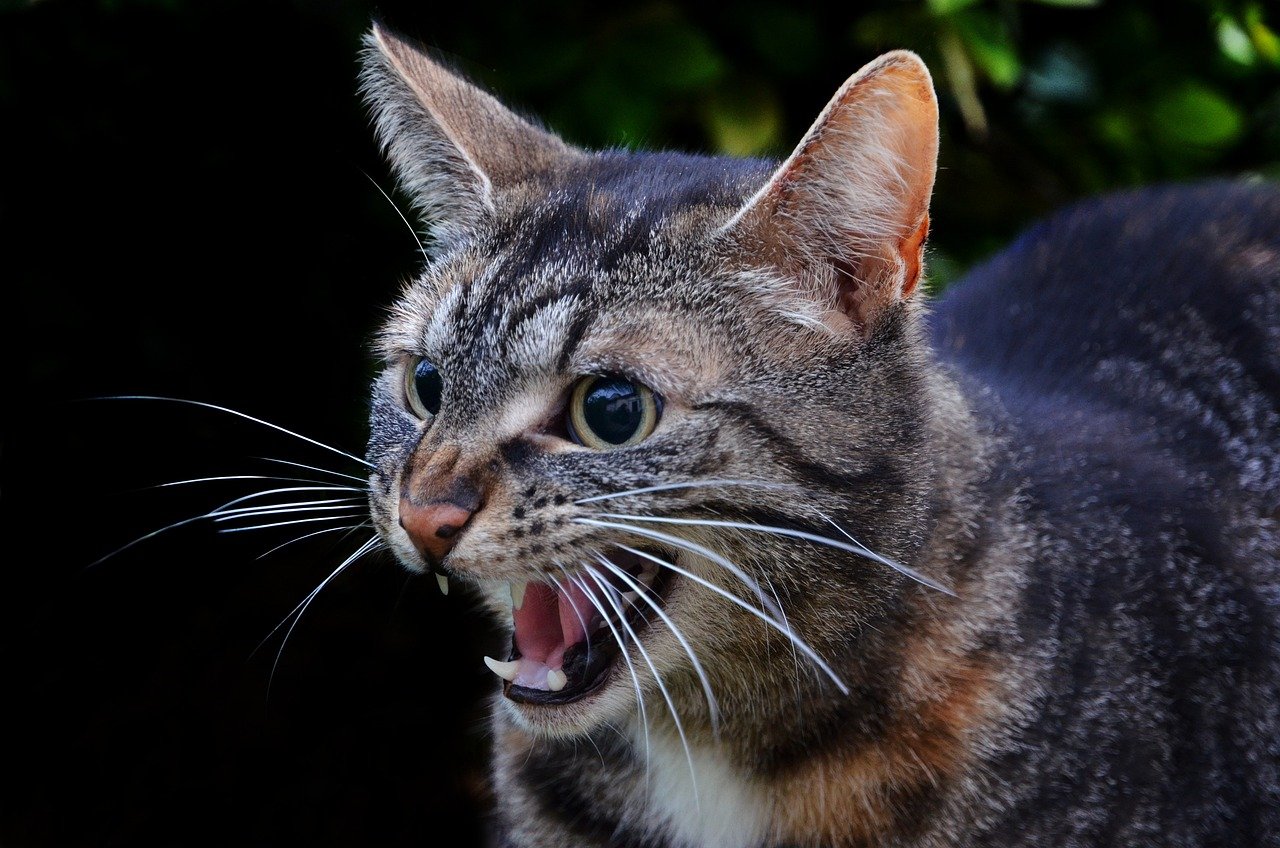
A lashing tail is a strong indication of anger or aggression. Like a storm brewing, this behavior signals that your cat is ready to strike. It’s crucial to approach with caution and give your cat plenty of space. This tail movement often occurs when a cat feels threatened or cornered. It’s a defensive posture that warns of potential aggression if the situation doesn’t change. Recognizing this behavior allows you to deescalate the situation and prevent any negative interactions. Providing a calm and safe environment can help your cat regain its composure and return to a more relaxed state.
The Tip Twitch
When only the tip of your cat’s tail twitches, it’s often a sign of heightened curiosity or focus. Imagine yourself narrowing your eyes to concentrate on a puzzle; your cat’s tail tip twitch serves a similar function. This behavior is commonly observed when a cat is stalking prey, watching birds through a window, or inspecting a new object. It indicates that your cat is mentally engaged and alert. Encouraging this natural curiosity with interactive toys or stimulating environments can provide mental enrichment for your cat. The tip twitch is a delightful glimpse into your cat’s inquisitive nature.
The Tucked Tail

A tucked tail is a sign of fear or submission. Much like how we might lower our heads when feeling intimidated, a cat with a tucked tail is expressing vulnerability. This behavior can occur in response to loud noises, unfamiliar surroundings, or confrontations with other animals. It’s essential to provide comfort and reassurance to help your cat feel secure. Creating a safe space with familiar scents and objects can alleviate anxiety and encourage your cat to relax. Understanding the context of a tucked tail can help you address your cat’s needs and foster a sense of security.
The Straight-Out Tail

A tail held straight out behind a cat is often a sign of caution or assessing a situation. Picture someone carefully walking across a balance beam; your cat’s tail serves a similar purpose in maintaining balance and readiness. This behavior is typical when a cat encounters something unfamiliar or intriguing. It signifies that your cat is alert and gathering information about its surroundings. Observing your cat’s reactions can provide insights into its comfort level and help you address any potential stressors. A straight-out tail is a testament to your cat’s alertness and adaptability.
The Slow Sway
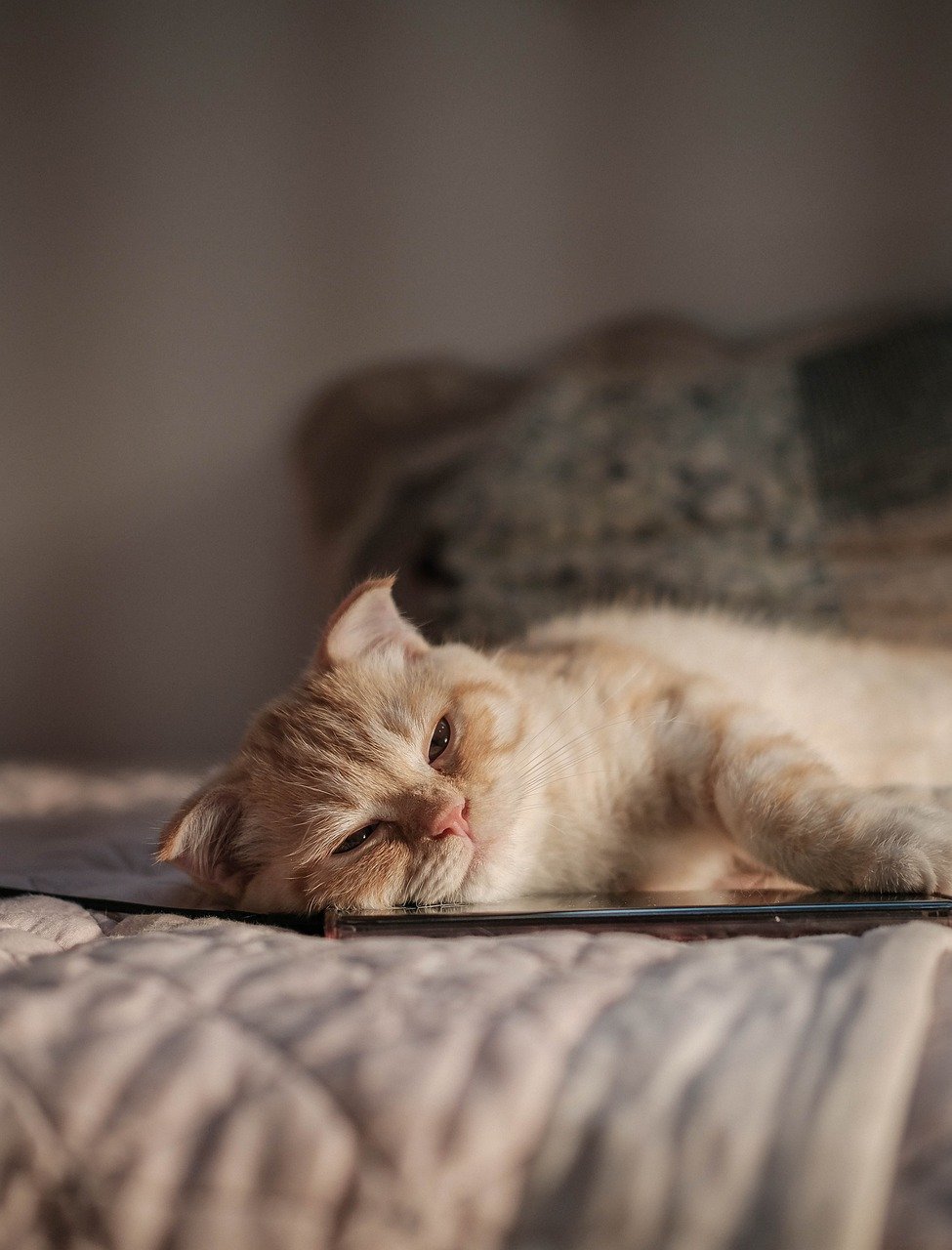
A slow, gentle sway of the tail can indicate contentment and relaxation. Much like swaying gently in a hammock, your cat is enjoying a moment of peace and tranquility. This behavior is often observed when a cat is lounging in a sunny spot or receiving affectionate petting. It signifies that your cat is comfortable and at ease in its environment. Encouraging these moments of relaxation with cozy bedding or soft music can enhance your cat’s sense of well-being. The slow sway is a beautiful reminder of the simple joys in a cat’s life.
The Upright Tail with a Hook
An upright tail with a slight hook at the end can indicate a playful and friendly disposition. Imagine someone waving a friendly hello with a slight flourish; your cat’s tail conveys a similar message. This behavior often occurs when a cat is approaching a familiar person or pet. It signifies a willingness to engage and interact positively. Recognizing this tail posture can enhance your bond with your cat by encouraging social interactions and play. The upright tail with a hook is a delightful expression of your cat’s sociable nature.
The Fluffed Base
A tail with a fluffed base can indicate excitement or arousal. Similar to how we might get goosebumps during a thrilling moment, a cat’s fluffed tail base signals heightened emotions. This behavior is commonly observed during play or hunting scenarios. It signifies that your cat is fully engaged and ready for action. Providing stimulating toys or interactive play sessions can channel this energy positively. The fluffed base is a testament to your cat’s playful spirit and zest for life.
The Relaxed Tail
A relaxed tail is a sign of contentment and ease. Much like lounging comfortably in a favorite chair, your cat is enjoying a moment of calm. This behavior is often observed when a cat is resting or observing its surroundings peacefully. It signifies that your cat feels secure and satisfied in its environment. Encouraging these moments with a cozy resting spot or gentle petting can enhance your cat’s sense of well-being. The relaxed tail is a heartwarming expression of your cat’s happiness.
The Tail Quiver
A quivering tail can indicate excitement or anticipation. Imagine the thrill of waiting for a surprise; your cat’s tail quiver conveys similar emotions. This behavior is commonly observed when a cat is about to be fed or when greeting a beloved human. It signifies that your cat is eagerly anticipating something enjoyable. Recognizing this tail movement can help you enhance your cat’s experiences with positive reinforcement and rewarding interactions. The tail quiver is a joyous expression of your cat’s enthusiasm.
The Crooked Tail
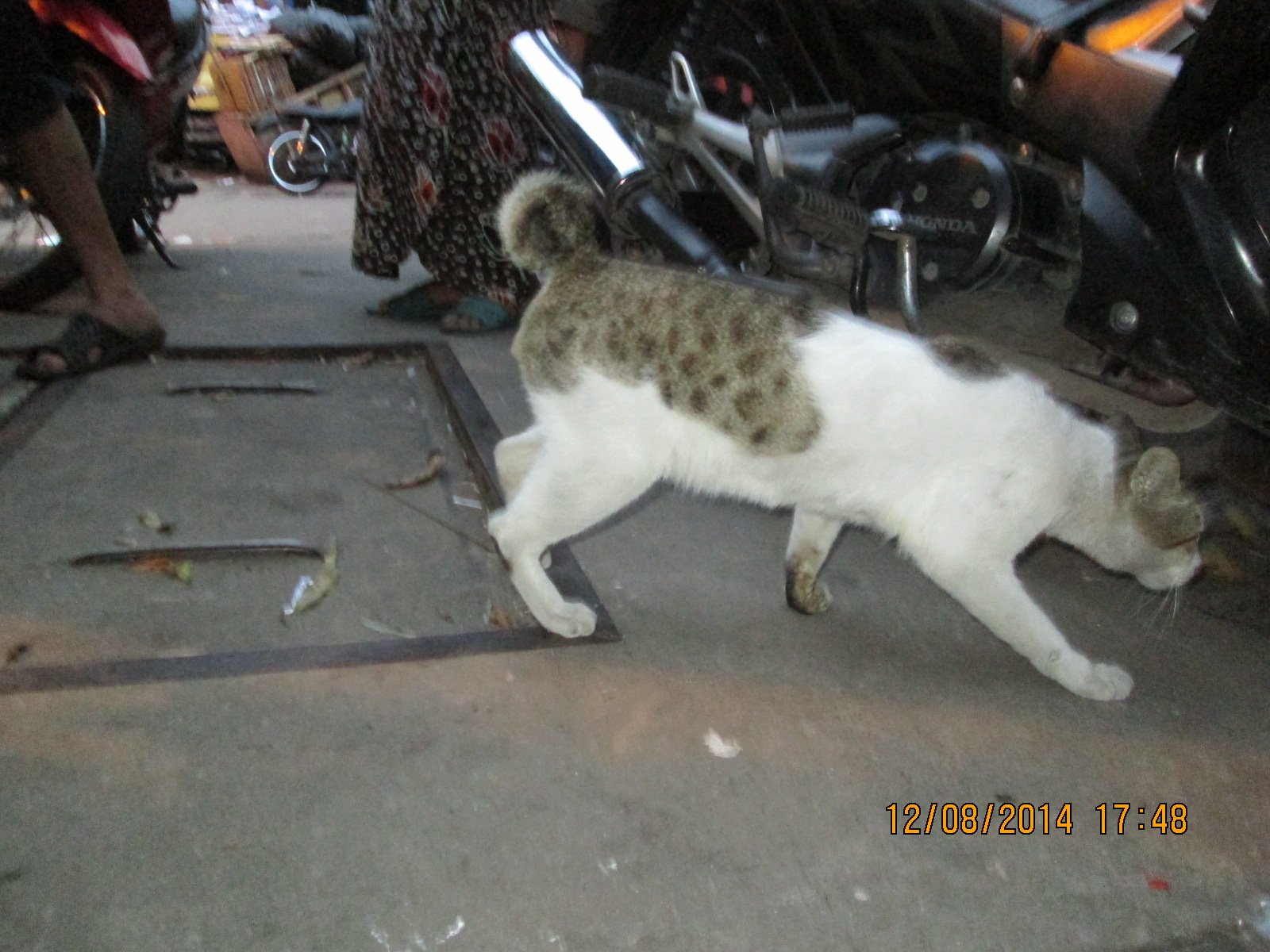
A crooked or bent tail can indicate a unique personality trait or a past injury. Similar to how we might have a distinctive feature, a cat’s crooked tail is part of its individuality. This behavior is often observed in cats with naturally kinked tails or those that have experienced tail injuries. It signifies that your cat has adapted to its distinct tail shape and continues to express itself confidently. Embracing your cat’s unique traits can strengthen your bond and celebrate its individuality. The crooked tail is a charming reminder of your cat’s uniqueness.
The Tail Wag

A wagging tail in cats can be a bit misleading, as it often indicates irritation rather than happiness. Unlike dogs, cats wag their tails as a sign of annoyance or overstimulation. Picture someone waving their hand dismissively; your cat’s tail wag conveys a similar message. This behavior can occur when a cat is being petted too vigorously or is feeling trapped. Recognizing this tail movement can help you adjust your interactions and ensure your cat’s comfort. The tail wag is a clear signal to respect your cat’s boundaries.
The Tail Held to One Side
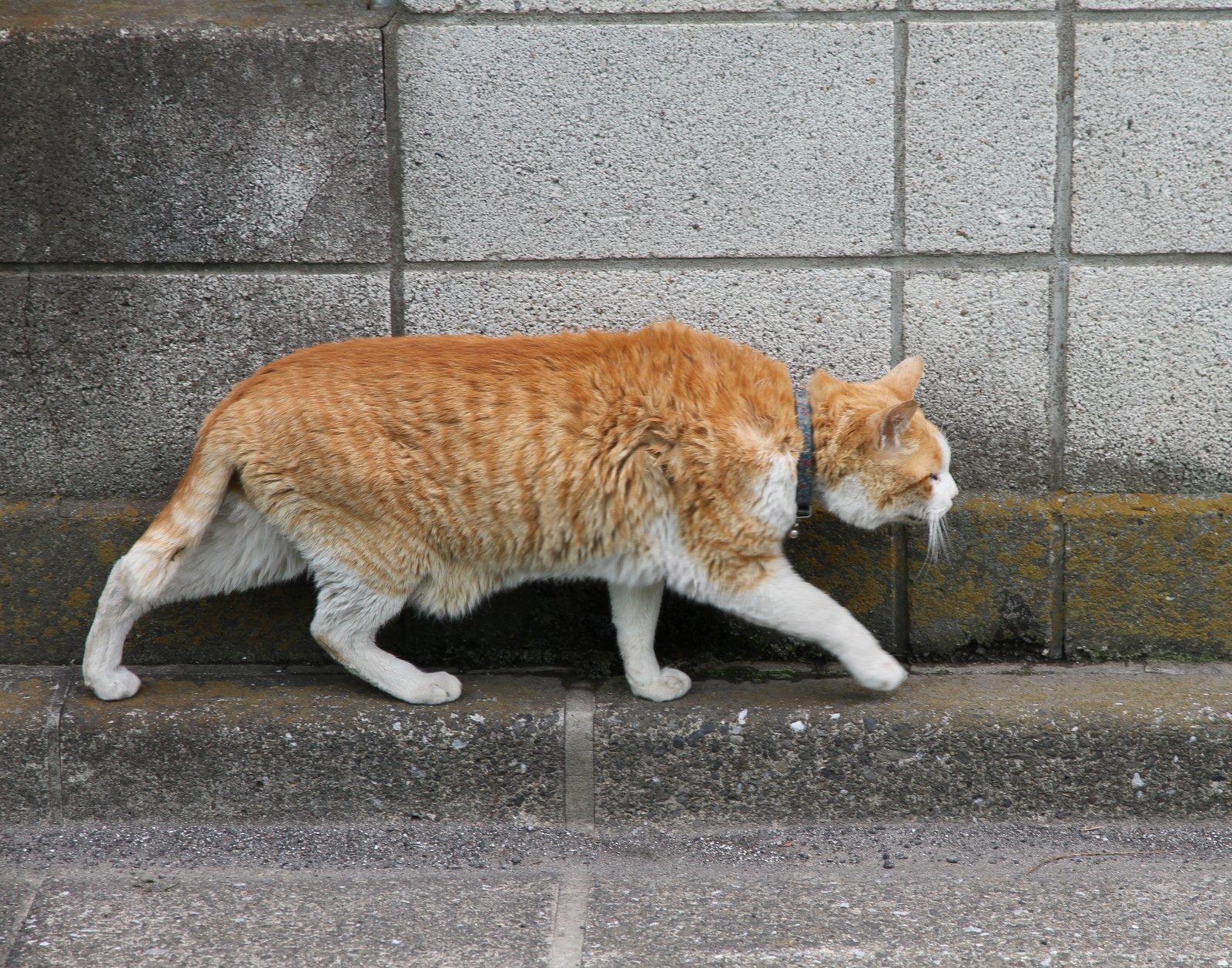
A tail held to one side can indicate a relaxed yet alert state. Imagine lounging comfortably while still keeping an eye on your surroundings; your cat’s tail conveys a similar balance of relaxation and awareness. This behavior is often observed when a cat is resting but remains attentive to its environment. It signifies that your cat is at ease but ready to respond if needed. Encouraging this balance with a peaceful environment and engaging activities can enhance your cat’s overall well-being. The tail held to one side is a testament to your cat’s adaptability.
The Tail in Constant Motion
A tail that’s constantly in motion can indicate restlessness or hyperactivity. Similar to how we might fidget when feeling restless, a cat’s tail in constant motion signals a need for stimulation. This behavior is often observed in active or energetic cats that require ample playtime and mental engagement. Providing interactive toys, puzzles, and play sessions can help channel this energy positively. Recognizing this tail movement can enhance your cat’s experiences and prevent potential behavioral issues. The tail in constant motion is a lively expression of your cat’s vitality.
Understanding the language of your cat’s tail is like unlocking a secret code to their world. Each movement and position tells a story of what your feline friend is experiencing or feeling. By paying attention to these tail signals, you can build a stronger, more communicative relationship with your cat. Whether it’s joy, fear, curiosity, or contentment, your cat’s tail is always speaking volumes, inviting you to listen and respond with love and care.
Hi, I’m Bola, a passionate writer and creative strategist with a knack for crafting compelling content that educates, inspires, and connects. Over the years, I’ve honed my skills across various writing fields, including content creation, copywriting, online course development, and video scriptwriting.
When I’m not at my desk, you’ll find me exploring new ideas, reading books, or brainstorming creative ways to solve challenges. I believe that words have the power to transform, and I’m here to help you leverage that power for success.
Thanks for stopping by, Keep coming to this website to checkout new articles form me. You’d always love it!






